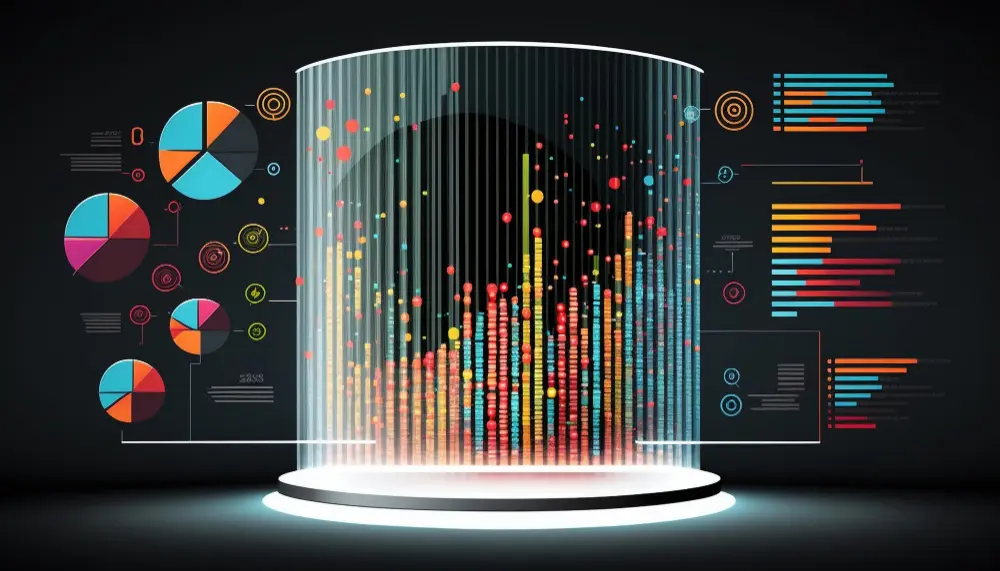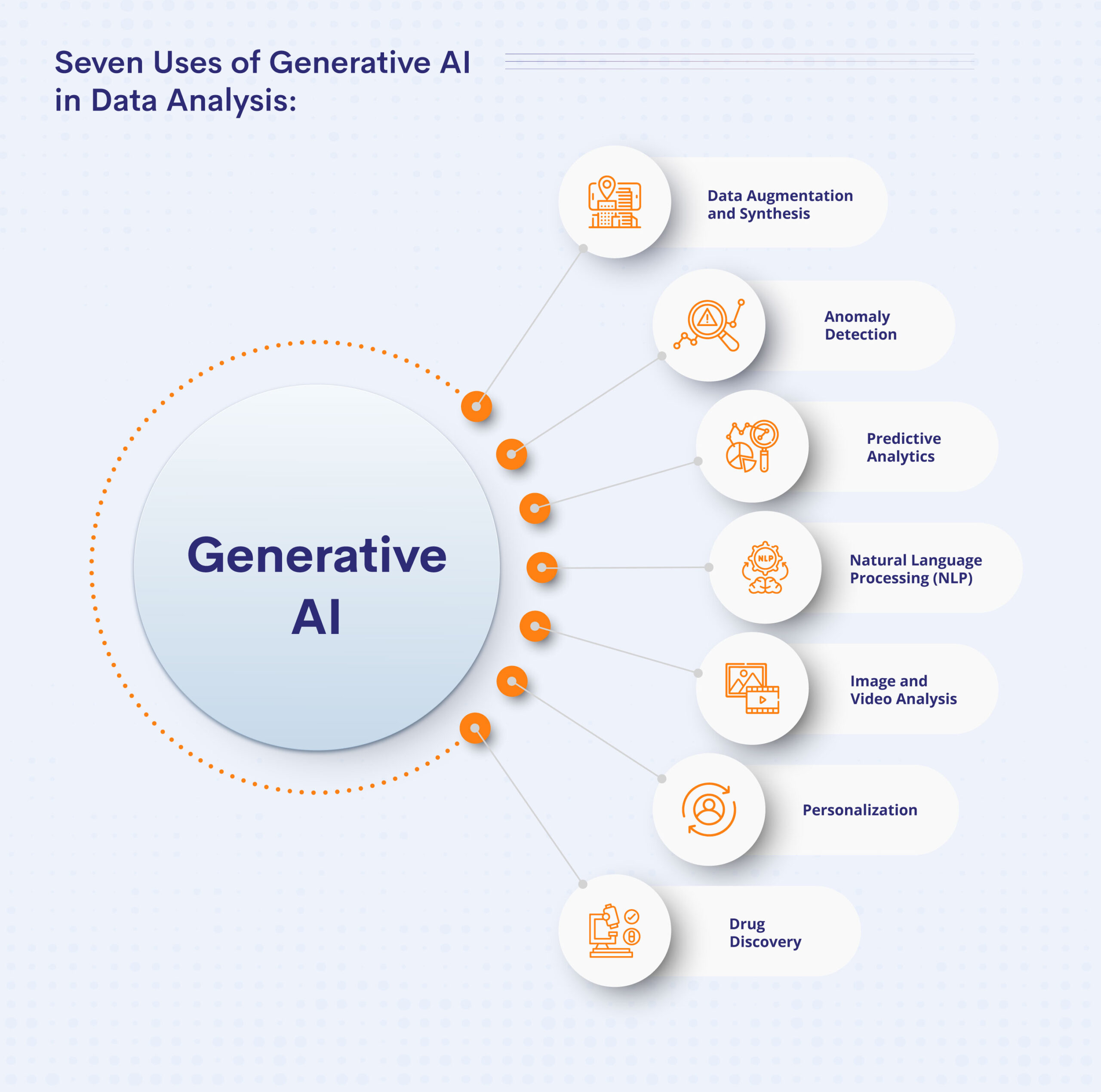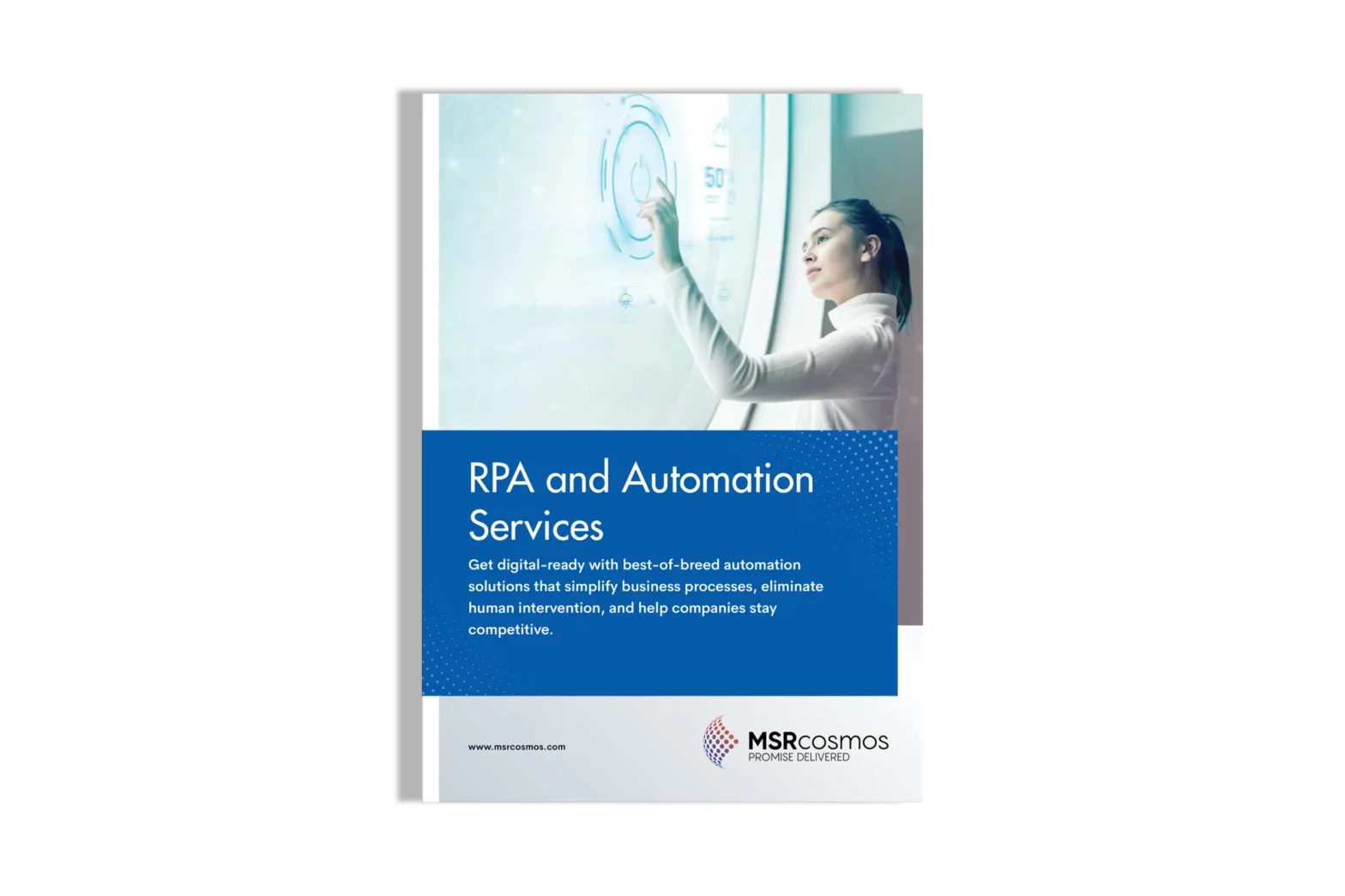- Blog
- October 13, 2023
Seven Uses of Generative AI in Data Analysis

- Blog
- October 13, 2023
Seven Uses of Generative AI in Data Analysis
In our contemporary data-centric landscape, enterprises and institutions alike are amassing colossal volumes of data at an unprecedented velocity. This data is frequently likened to the new currency, possessing immense, yet untapped, potential for unearthing invaluable insights, fostering innovation, and gaining a substantial competitive edge. Nevertheless, the central quandary remains: how can one extract meaningful and actionable information from this veritable deluge of data?
Generative AI: A Game Changer for Data Analysis
Generative Artificial Intelligence (Generative AI) is a true game-changer in the field of data analysis. Through innovative technologies like Generative Adversarial Networks (GANs) and Transformers, Generative AI has sparked a revolution, enabling the generation, modification, and in-depth analysis of data. It’s a transformative force that’s reshaping the way we understand and work with data.
The Seven Uses of Generative AI in Data Analysis

1. Data Augmentation and Synthesis
One of the primary applications of Generative AI in data analysis is data augmentation. By using GANs, businesses can create synthetic data that closely resembles their real data. This augmented dataset can then be used to train machine learning models, improving their performance and robustness.
2. Anomaly Detection
Generative AI is remarkably effective in identifying anomalies within datasets. By analyzing the generated data patterns, it can spot deviations from the norm, which is crucial in various fields like fraud detection, network security, and quality control.
3. Predictive Analytics
Generative AI can predict future data points based on historical data. This capability is invaluable for forecasting trends, demand, and potential outcomes in fields like finance, supply chain management, and healthcare.
4. Natural Language Processing (NLP)
In the realm of text data analysis, Generative AI models like GPT-3 and BERT have achieved breakthroughs in language understanding and generation. They can summarize lengthy texts, translate languages, answer questions, and even generate human-like text.
5. Image and Video Analysis
Generative AI has revolutionized image and video analysis. StyleGAN, for instance, can generate high-quality, realistic images, while Convolutional GANs (DCGANs) can enhance image resolution. These capabilities find applications in content generation, image recognition, and medical imaging.
6. Personalization
Generative AI is a driving force behind personalization in recommendation systems. By analyzing user data and generating tailored recommendations, it enhances user experiences in e-commerce, content streaming, and marketing.
7. Drug Discovery
In pharmaceuticals, Generative AI expedites drug discovery by simulating molecular structures and predicting their properties. This reduces the time and cost associated with drug development.
8. Challenges and Ethical Considerations
While Generative AI offers tremendous potential, it also comes with challenges. Data privacy, bias in generated content, and ethical concerns regarding deepfakes are some of the critical issues that need addressing.
Conclusion: A New Era of Data Analysis
Generative AI represents a paradigm shift in data analysis. Its ability to generate, augment, and analyze data, combined with its applications in various domains, positions it as a transformative technology. As businesses continue to grapple with vast datasets, Generative AI offers a powerful tool to unlock hidden insights, streamline decision-making processes, and drive innovation. Embracing Generative AI in your data analysis endeavors could be the key to staying competitive in the data-driven future.




